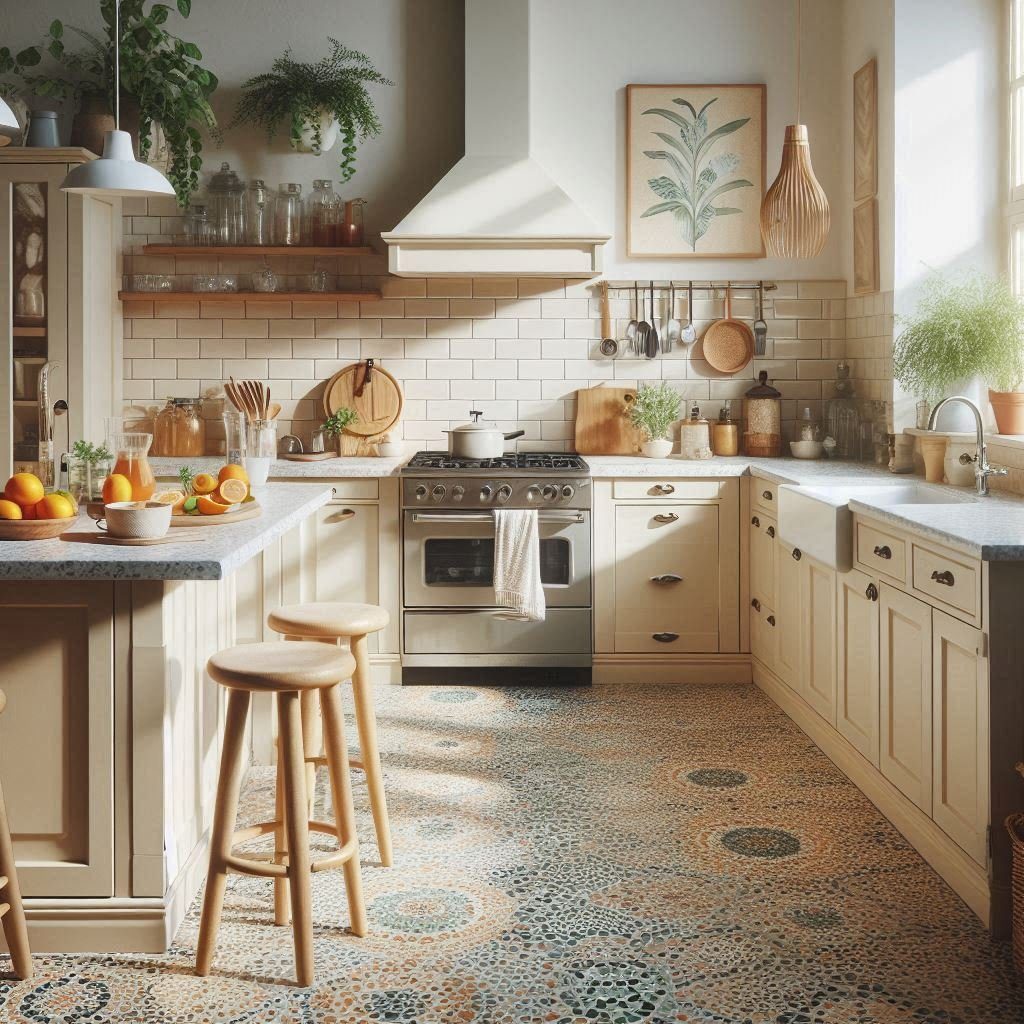The kitchen, often dubbed the heart of any home, demands flooring that harmoniously blends aesthetics with practicality. As homeowners become increasingly discerning about their interior choices, the flooring beneath their feet has emerged as a crucial element in kitchen design.
The metamorphosis of kitchen flooring options has been nothing short of extraordinary, with manufacturers constantly innovating to meet the multifaceted demands of modern living. From the perennial appeal of traditional materials to the avant-garde alternatives that challenge conventional wisdom, today’s kitchen flooring landscape offers an embarrassment of riches.
Whether you’re embarking on a complete kitchen renovation or simply seeking to rejuvenate your culinary space, understanding the diverse array of flooring options can help you make an informed decision that aligns with your lifestyle, budget, and aesthetic preferences.
Kitchen Flooring Ideas
Let’s explore fifteen distinctive kitchen flooring ideas that promise to elevate your kitchen’s ambiance while ensuring durability and maintenance simplicity.
1. Porcelain Tiles
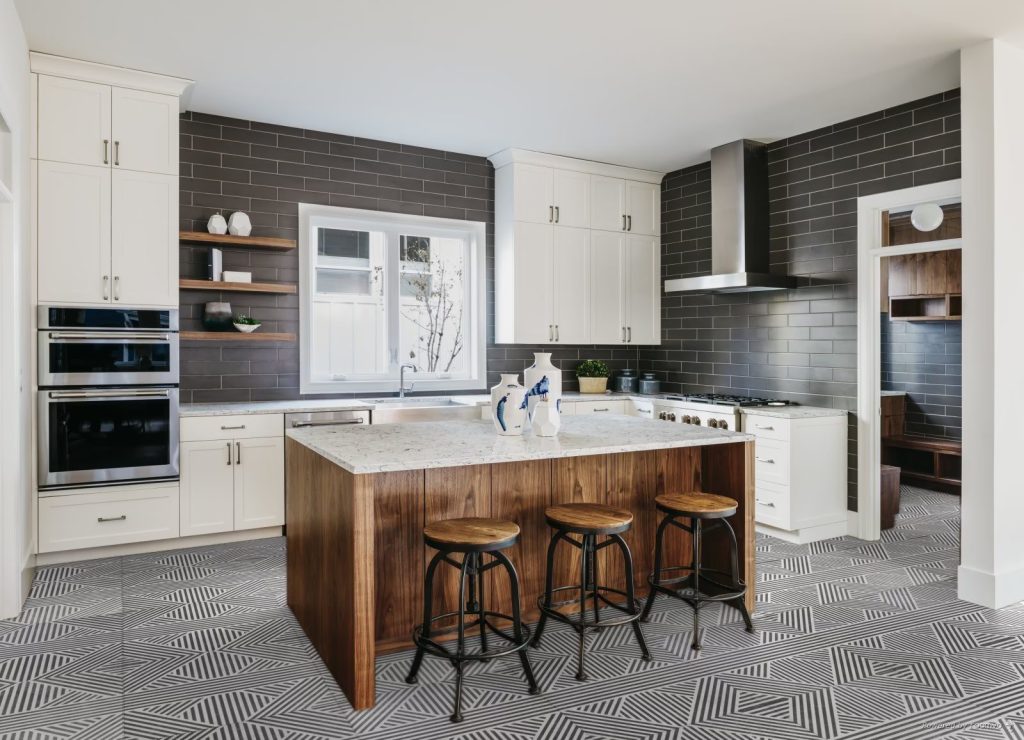
Porcelain tiles represent the pinnacle of versatility in kitchen flooring. These dense, fine-grained tiles are crafted from high-quality clays fired at extremely high temperatures, resulting in an exceptionally durable and water-resistant surface that can withstand the rigors of busy kitchen life.
Beyond their practical benefits, porcelain tiles offer unprecedented design flexibility. They can convincingly mimic natural materials like marble, wood, or concrete while providing superior durability and requiring minimal maintenance. Available in an extensive range of sizes, colors, and patterns, they allow homeowners to create distinctive looks from classic to contemporary.
2. Natural Stone
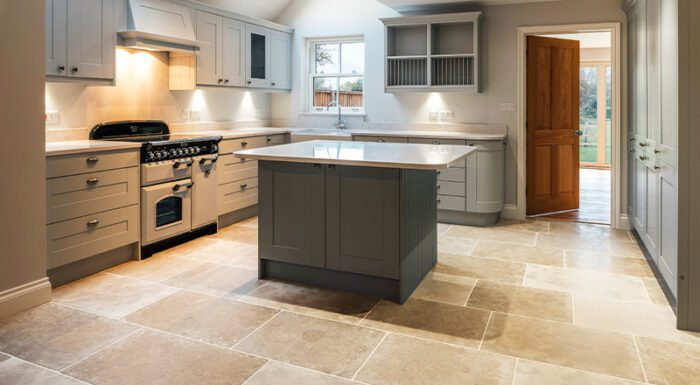
Natural stone flooring brings an unmatched element of luxury and timeless beauty to kitchen spaces. Whether it’s marble, granite, slate, or travertine, each stone type possesses unique characteristics and natural variations that create one-of-a-kind patterns.
The organic beauty of natural stone extends beyond mere aesthetics. These materials offer excellent durability when properly sealed and maintained, and they can last for generations. Their natural thermal properties make them ideal for homes in warmer climates, as they remain cool underfoot even during hot summer months.
3. Hardwood
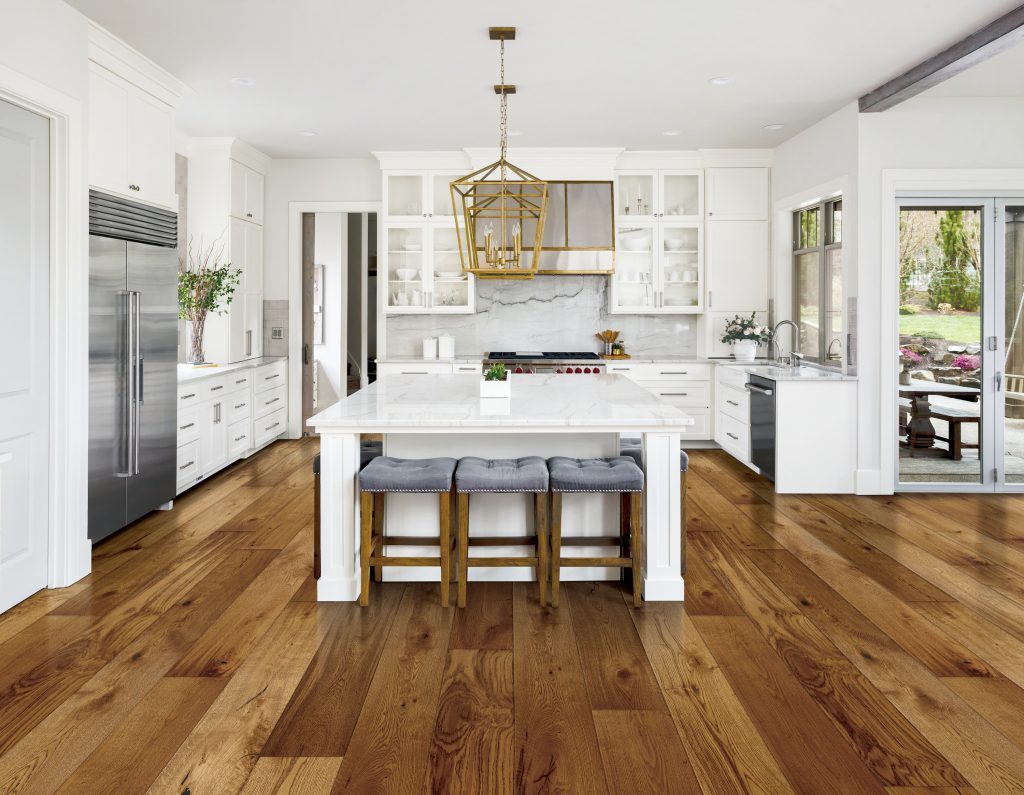
Hardwood flooring continues to reign supreme in kitchen design, offering warmth and natural beauty that few materials can match. Species like oak, maple, and walnut provide different grain patterns and color variations that can complement any kitchen style.
Traditional solid hardwood or engineered alternatives both offer distinct advantages. While solid hardwood can be refinished multiple times, engineered hardwood provides better resistance to moisture and temperature fluctuations. The key to successful hardwood installation in kitchens lies in proper sealing and prompt attention to spills.
4. Luxury Vinyl Tiles (LVT)
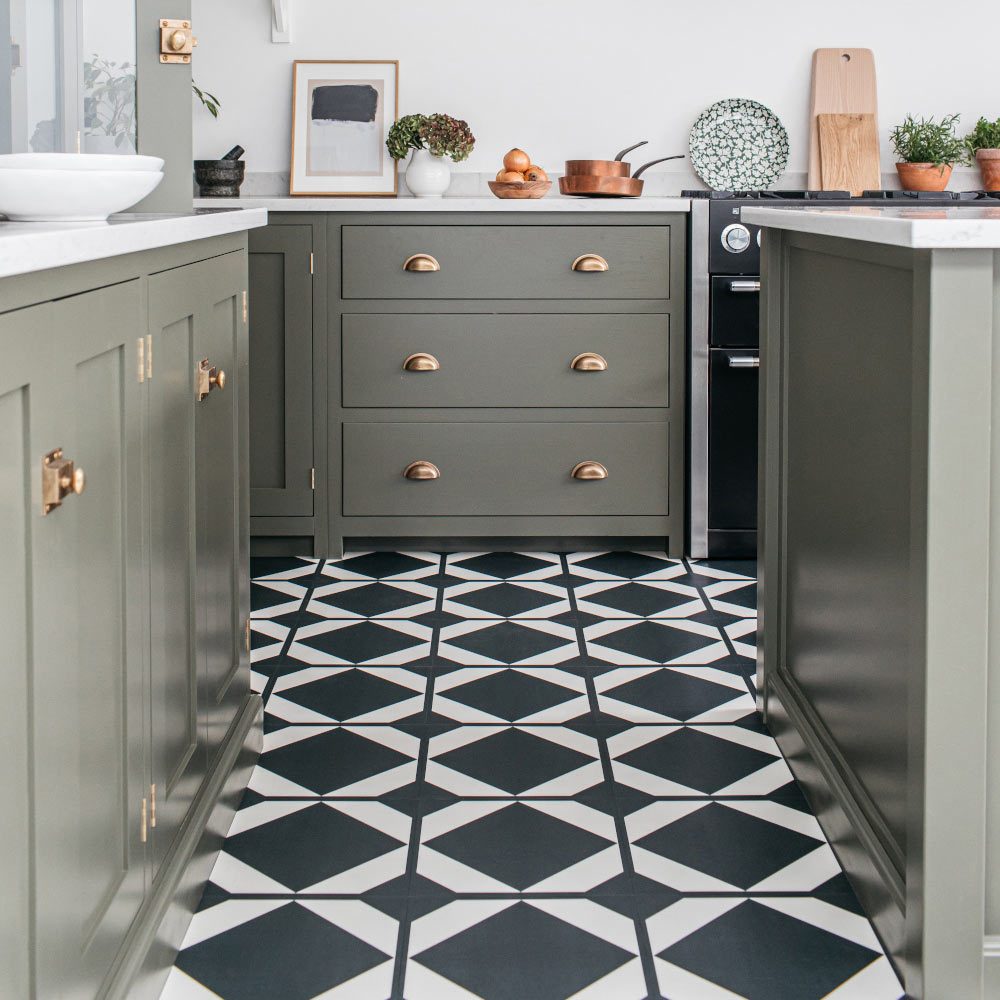
Luxury Vinyl Tiles have revolutionized kitchen flooring with their perfect balance of style, durability, and affordability. These sophisticated synthetic materials utilize advanced printing and embossing technologies to create remarkably realistic representations of natural materials.
Modern LVT options feature enhanced wear layers that resist scratches and stains, making them ideal for high-traffic kitchens. Their water-resistant properties and comfortable underfoot feel make them particularly appealing to families with young children or pets. Installation options include peel-and-stick, click-lock, or glue-down methods.
Related Guide: 15 Inspiring Flooring Ideas for Your Home
5. Polished Concrete
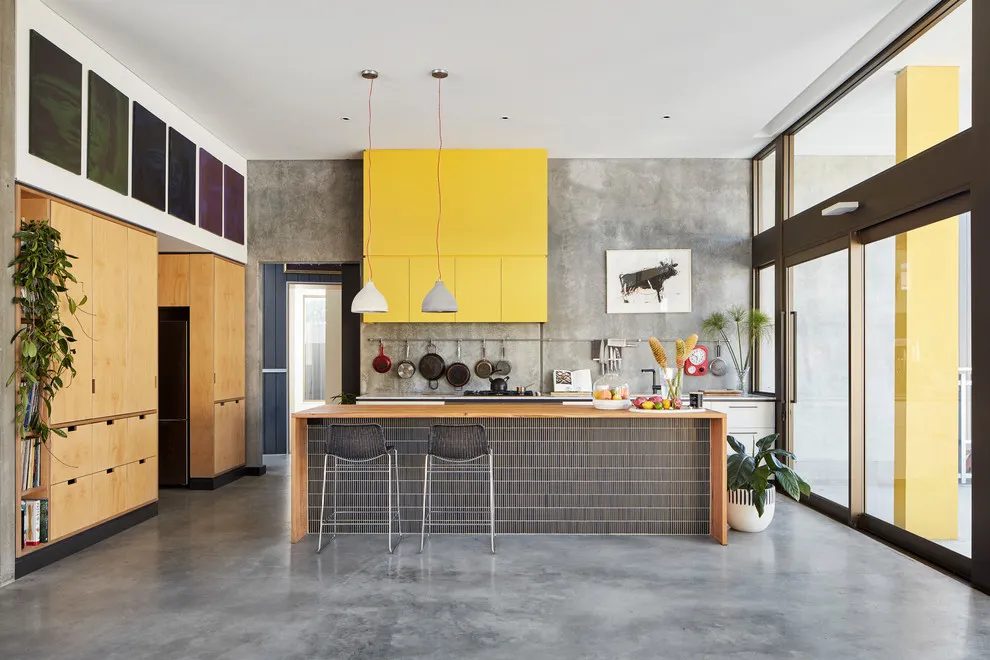
Polished concrete floors epitomize industrial chic while offering unparalleled durability. This sustainable flooring option transforms existing concrete slabs into smooth, glossy surfaces through a multi-step grinding and polishing process.
These floors can be customized with various finishing techniques, including staining, scoring patterns, or embedding decorative aggregates. The result is a sophisticated, low-maintenance surface that works particularly well in modern and minimalist kitchen designs.
6. Cork

Cork flooring presents an eco-friendly option that’s gaining popularity in contemporary kitchens. Harvested from the bark of cork oak trees without harming them, this renewable material offers unique benefits including natural antimicrobial properties and excellent thermal insulation.
The soft, springy nature of cork makes it exceptionally comfortable underfoot, reducing fatigue during long cooking sessions. Available in various patterns and colors, cork can be finished to match any kitchen style while providing natural sound absorption properties.
7. Bamboo
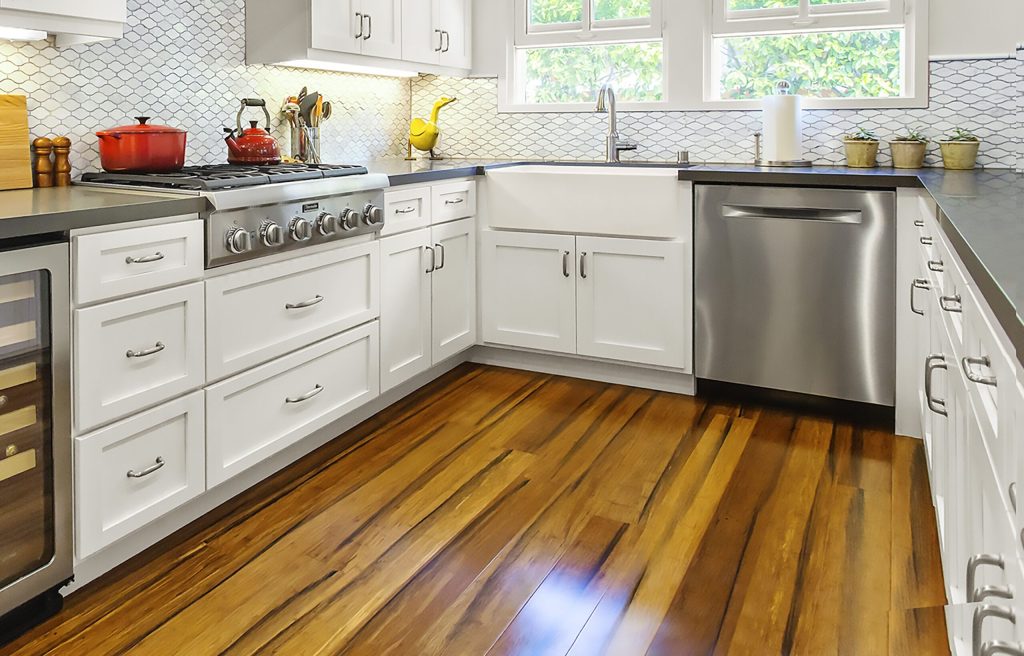
Bamboo flooring offers a sustainable alternative to traditional hardwood while providing similar aesthetic appeal. This rapidly renewable resource creates floors that are surprisingly harder than many traditional hardwoods, making them well-suited for kitchen environments.
Modern manufacturing processes have improved bamboo’s moisture resistance, making it more suitable for kitchen installations. Available in both natural and carbonized finishes, bamboo can be found in various styles, from traditional parallel grain to exotic strand-woven patterns.
8. Ceramic Tiles
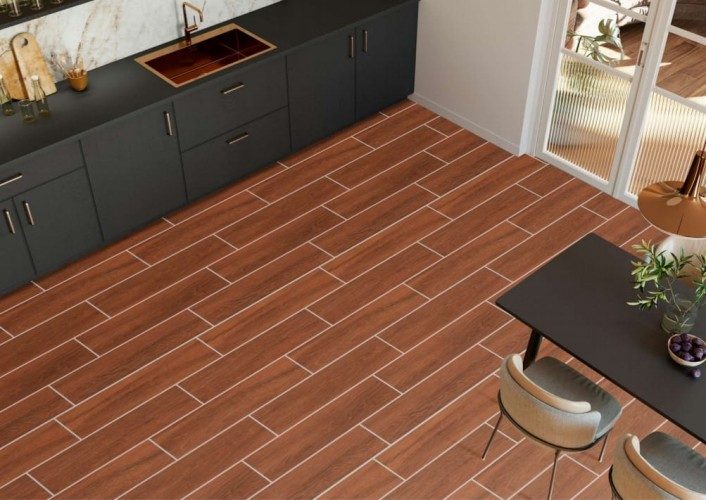
Ceramic tiles remain a classic choice for kitchen flooring, offering excellent value and versatility. These tiles are created from clay materials fired at lower temperatures than porcelain, resulting in a more affordable yet still durable option.
The wide variety of available colors, patterns, and sizes allows for creative installation patterns, from simple grid layouts to complex geometric designs. While slightly more porous than porcelain, properly glazed ceramic tiles provide good water resistance and easy maintenance.
9. Rubber

Rubber flooring, once limited to commercial kitchens, has found its way into residential spaces. This resilient material offers exceptional comfort underfoot and natural slip resistance, making it particularly suitable for kitchens where spills are common.
Available in sheets or tiles, modern rubber flooring comes in various colors and textures. Its inherent durability and ability to withstand heavy foot traffic make it an excellent choice for busy family kitchens, while its sound-dampening properties add to its appeal.
10. Laminate
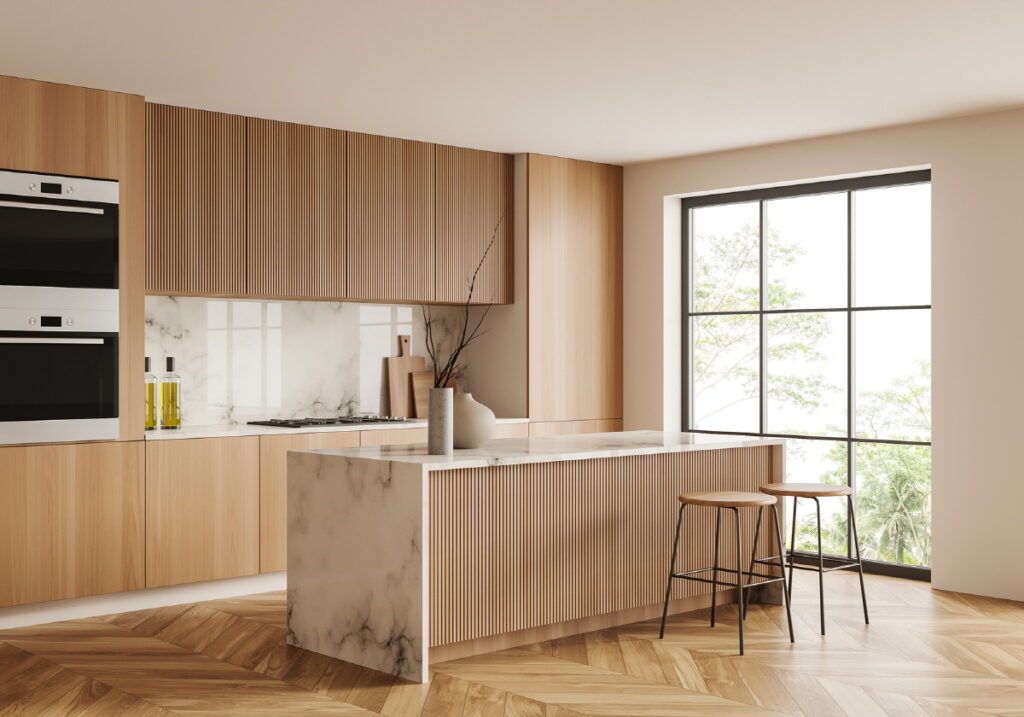
Laminate flooring technology has evolved significantly, creating options that rival the appearance of natural materials while offering superior durability and water resistance. Modern laminate floors feature enhanced core materials and improved edge sealing to better handle kitchen environments.
The latest innovations include embossed-in-register texturing that perfectly aligns with the printed pattern, creating highly realistic wood and stone looks. Installation is typically straightforward with click-lock systems, making it an attractive option for DIY enthusiasts.
11. Glass Tiles
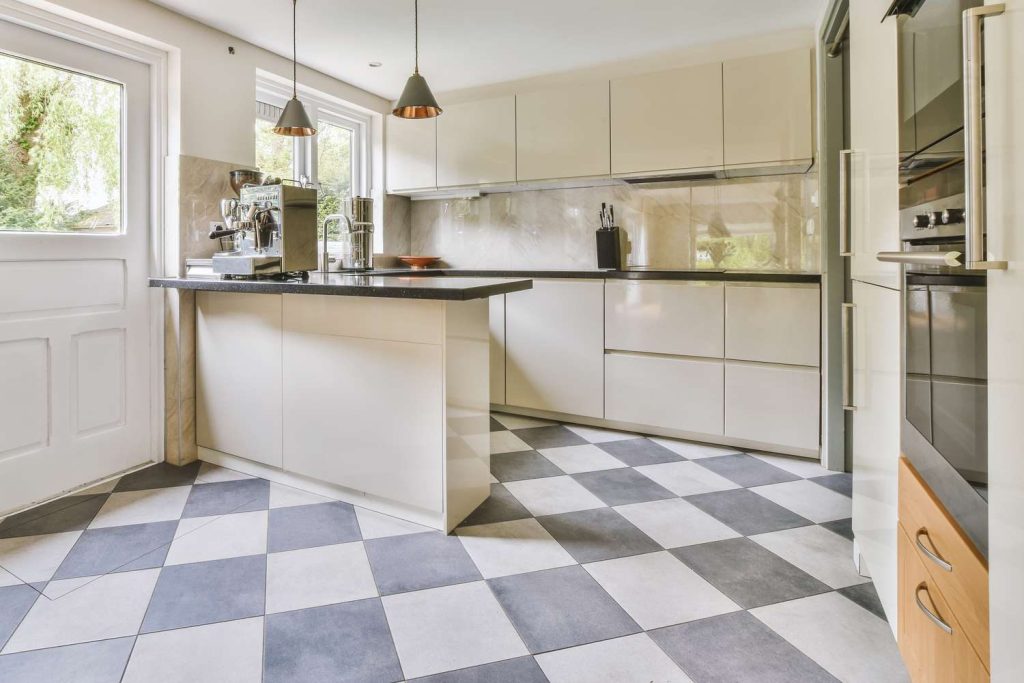
Glass tiles offer a unique and sophisticated flooring option that can create stunning visual effects in kitchen spaces. Their reflective properties can help brighten rooms and create the illusion of more space, while their non-porous nature makes them extremely resistant to stains and moisture.
Available in countless colors, sizes, and finishes, glass tiles can be used to create intricate patterns or simple, elegant designs. While traditionally used as accent pieces, advances in manufacturing have produced more durable options suitable for floor applications.
12. Terrazzo
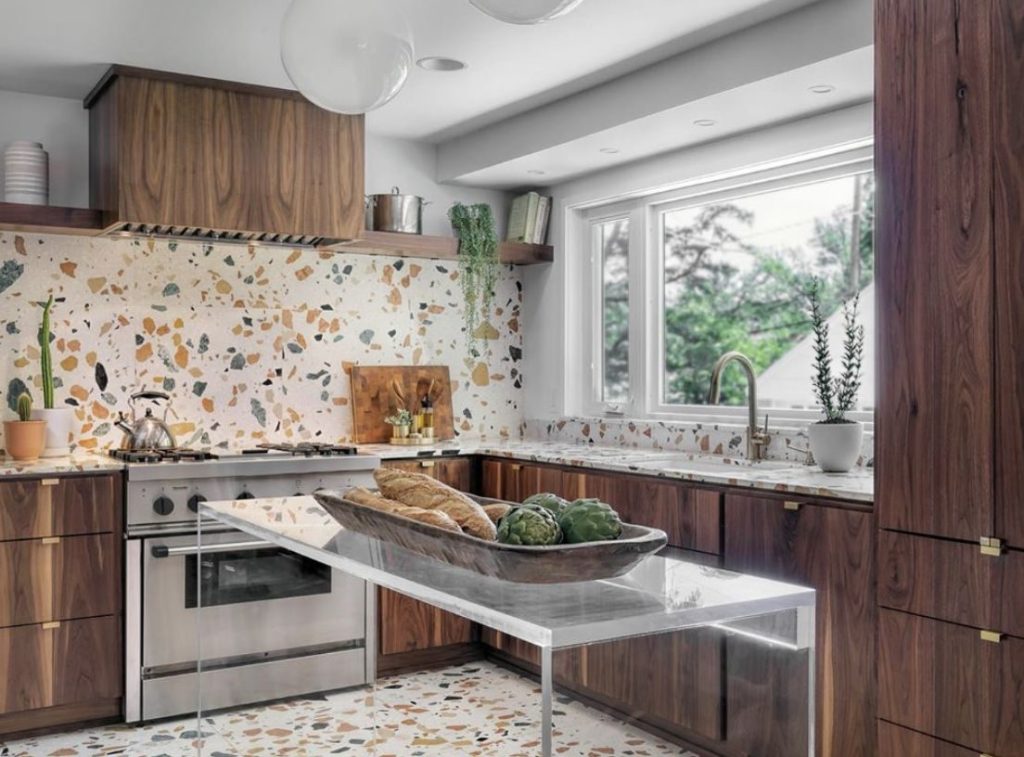
Terrazzo flooring brings timeless elegance and durability to kitchen spaces. This composite material, consisting of marble, quartz, granite, or glass chips set in a cementitious or resin-based binder, offers endless customization possibilities.
Modern terrazzo installations benefit from improved installation techniques and materials, making them more accessible for residential use. The result is a seamless, easy-to-clean surface that can incorporate custom designs and color combinations to match any kitchen style.
Related Guide: 13 Living Room Flooring Ideas
13. Reclaimed Wood
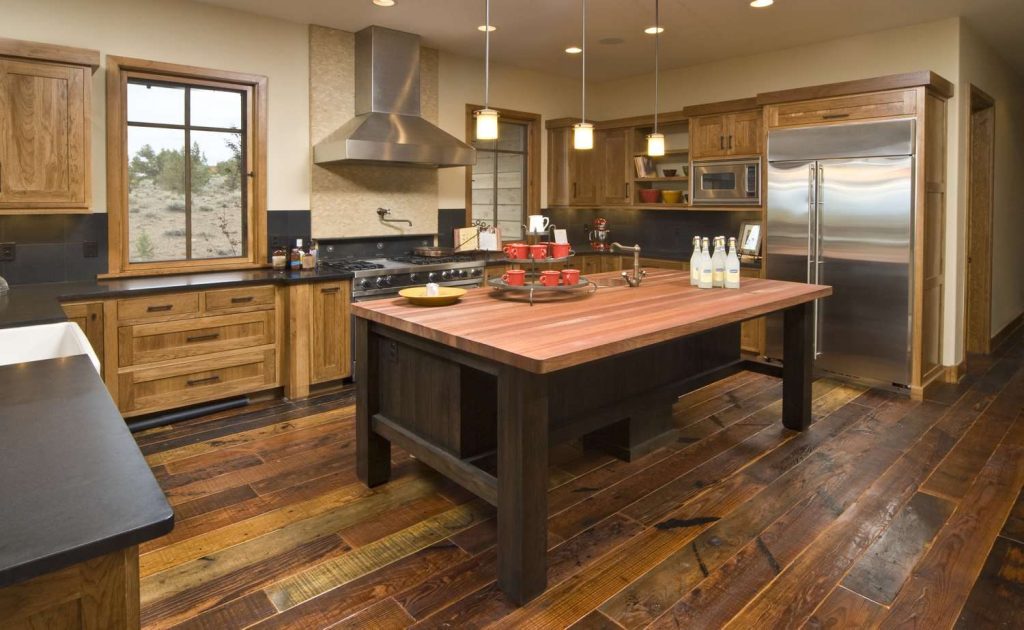
Reclaimed wood flooring adds character and environmental consciousness to kitchen spaces. Sourced from old buildings, barns, or industrial structures, these materials bring unique patinas and historical significance to modern homes.
Each reclaimed wood floor tells a story through its distinctive wear patterns and markings. While requiring careful selection and installation, these floors offer exceptional durability, having already withstood decades of use, and provide unmatched aesthetic appeal.
14. Patterned Cement Tiles
Patterned cement tiles, also known as encaustic tiles, offer bold design possibilities for kitchen floors. These handcrafted tiles feature intricate patterns created by different colored cement rather than surface glazes, ensuring the designs remain vibrant even with wear.
The installation of cement tiles requires expertise to achieve proper alignment of patterns and adequate sealing for protection. However, the result is a stunning floor that serves as the focal point of any kitchen design.
15. Epoxy
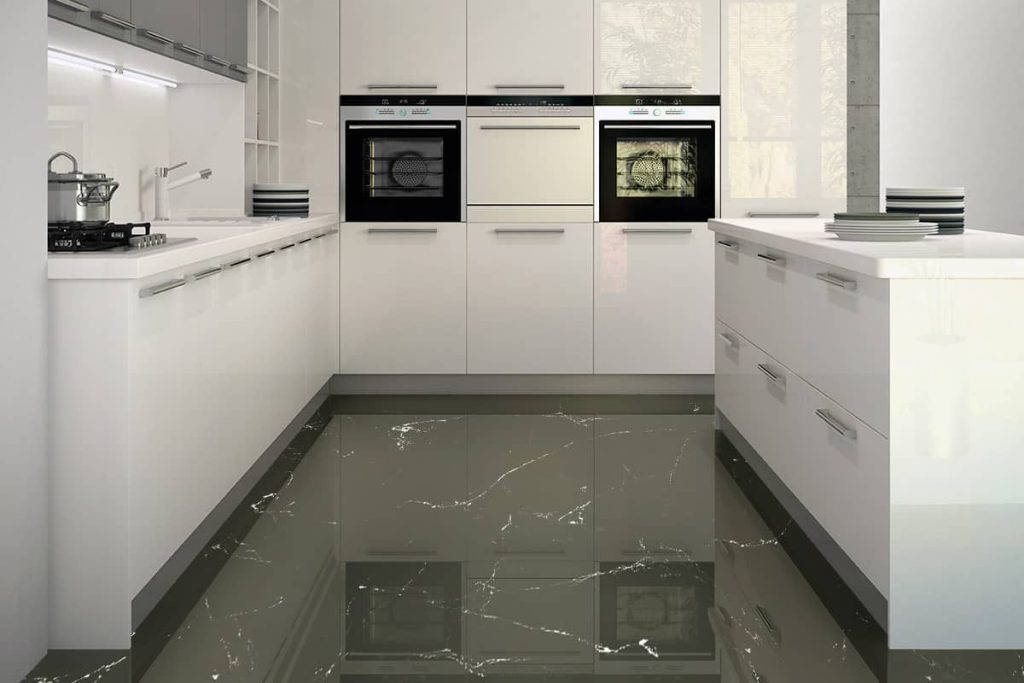
Epoxy flooring represents the cutting edge of kitchen floor technology. This seamless system combines durability with unlimited design potential, allowing for custom colors, patterns, and even three-dimensional effects.
Professional installation ensures a perfectly level, non-porous surface that resists stains, chemicals, and impact. While traditionally associated with commercial spaces, residential epoxy floors are gaining popularity for their unique aesthetic possibilities and exceptional performance characteristics.
Conclusion
The selection of kitchen flooring represents a significant decision that impacts both the functionality and aesthetic appeal of your culinary space. Each of the fifteen options presented offers unique advantages and considerations, from the timeless elegance of natural stone to the innovative possibilities of epoxy systems.
The key to making the right choice lies in carefully evaluating your specific needs, including maintenance requirements, durability expectations, and design preferences.
Whether you prioritize sustainability, comfort, or visual impact, today’s market offers a solution that can perfectly align with your vision while providing the necessary durability for this heavily trafficked area of your home. Remember that proper installation and maintenance are crucial factors in ensuring your chosen flooring performs optimally for years to come.

